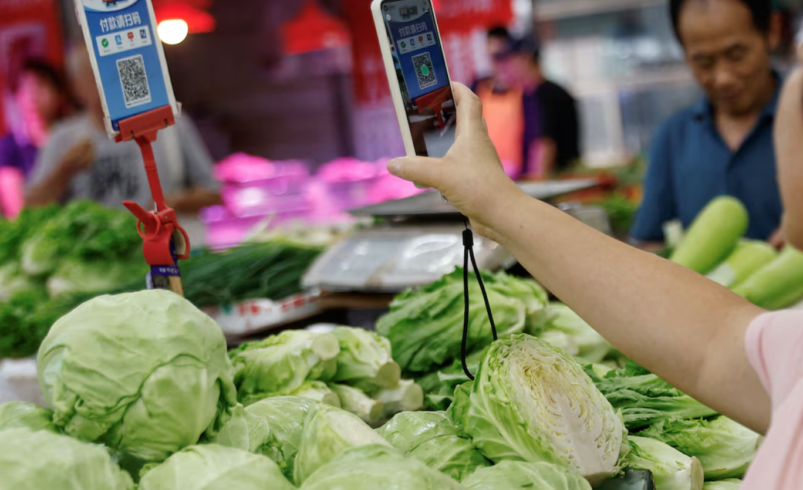China’s Consumer Prices Rise in August, But PPI Stays in Deflation
- September 9, 2024
- 0
China’s consumer prices rise in August, driven by higher food costs, while PPI remains stuck in deflation, adding pressure on policymakers.
China’s consumer prices rise in August, driven by higher food costs, while PPI remains stuck in deflation, adding pressure on policymakers.

China’s consumer inflation increased at its fastest pace in half a year in August, primarily driven by rising food prices caused by extreme weather conditions rather than a robust recovery in domestic demand. Meanwhile, the country’s Producer Price Index (PPI) remains stuck in deflation, forcing policymakers to introduce new measures to combat persistent economic challenges.
According to data released by the National Bureau of Statistics (NBS) on Monday, China’s Consumer Price Index (CPI) rose by 0.6% year-over-year in August, a slight increase from 0.5% in July, but falling short of the 0.7% increase forecast by economists in a Reuters poll. The uptick in inflation was primarily driven by higher food costs, as weather-related disruptions, including deadly floods and scorching heat, damaged crops across the country.
China’s state media reported that 1.46 million hectares of crops were affected by various natural disasters in August alone. Dong Lijuan, a statistician from the NBS, attributed the higher CPI to high temperatures and rainy weather.
However, the rise in consumer prices was largely weather-related and did little to mitigate concerns of broader deflationary pressure. “The rebound was softer than expected and did little to ease deflation concerns,” said Junyu Tan, North Asia Economist at Coface, adding that the increase in food prices is vulnerable to fluctuations in weather conditions.
Core inflation, which excludes volatile food and fuel prices, fell to 0.3% in August, marking its lowest level in nearly three and a half years, down from 0.4% in July. On a month-on-month basis, the CPI rose by 0.4%, slightly below economists’ expectations of a 0.5% increase.
The ongoing deflationary pressure has raised concerns about China’s economic recovery, with experts predicting that further fiscal measures will be necessary to stimulate domestic demand.
In contrast to the rise in consumer prices, China’s Producer Price Index (PPI) continued to fall in August, sliding by 1.8% from the previous year, the largest decline in four months. This was worse than the 0.8% drop recorded in July and fell short of economists’ forecasts of a 1.4% decline.
“The ongoing deflationary pressures boil down into a broader problem of production surplus, which is still outstripping demand,” explained Tan. Gabriel Ng, assistant economist at Capital Economics, added, “Increased fiscal spending may ultimately exacerbate the overcapacity problem, as government policy is still too skewed toward investment.”
As the yuan dipped against the dollar and China’s long-dated yields hit record lows, calls for policy action grew louder. China’s ex-central bank governor Yi Gang made strong remarks at the Bund Summit in Shanghai last week, urging the government to address the deflationary pressures facing the economy.
Despite efforts to stimulate consumer confidence, such as the earmarking of $41 billion in ultra-long treasury bonds for equipment upgrades and trade-in programs, the response has been tepid. For example, domestic car sales extended declines for the fourth consecutive month in July.
“These policies will take time to filter through, so a demand-led reflation is not yet on the horizon,” Tan cautioned.
Due to faltering economic activity and weak inflationary trends, several global brokerages have revised their China 2024 growth forecasts to below the official target of around 5%. Many experts agree that the country’s debt woes, prolonged housing downturn, and rising trade tensions compound its economic troubles.
China’s central bank official recently hinted that the reserve requirement ratio (RRR) could be lowered. This would allow banks to hold less cash in reserve in an effort to increase lending and stimulate economic activity.
As China moves into the second half of the year, the government faces growing pressure to roll out additional measures to bolster its economy. While fiscal spending may provide short-term relief, experts warn that it must be coupled with effective policies targeting consumer demand to avoid exacerbating the country’s existing economic challenges.